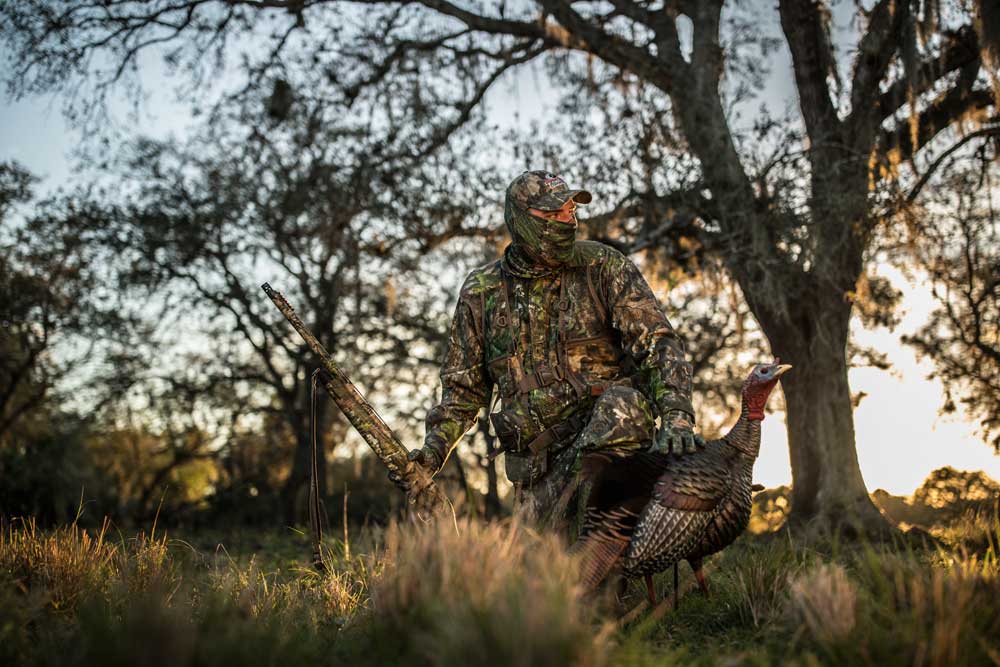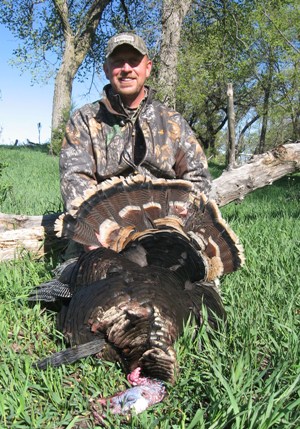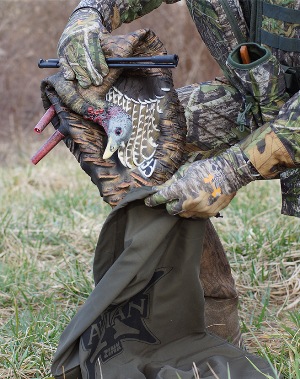by Heath Wood | Mossy Oak ProStaff

When I was a young teenager, my father and I hunted a local cattle farm in southern Missouri. This was one of the first times that he and I had turkey hunted together. For the previous three or four years I had been hunting with my grandfather. My father, not having much turkey hunting experience, decided he would tag along with me this particular spring morning.
This hunt was a first for me as well, hunting with decoys. I brought along a hen and jake decoy to try to fool a big tom into coming into gun range. That morning, we arrived several minutes before sunrise. It didn't take long before we heard our first gobble of the morning. We hiked across a wide open cow pasture then set up along the edge of the woods. The two or three gobbling turkeys were just over the hill still roosting but lighting the timber up with the thundering sound of their gobbles. I set the two decoys just out in the pasture then got back into the timber getting prepared for the approach. This is where the learning experience began with hunting with decoys.
First, don't sit your decoys in the same area as the cattle. Because, apparently, cattle are a very curious animal. After making a few calls, all the cattle that were several hundred yards away when we walked in, had now made their way to our decoys. They circled them, smelled them, nudge them, and then eventually picked up the decoy off of the stake. Of course, this kind of ruined that set up. The two gobbling turkeys had gone silent. My father and I moved down into the timber and tried a different set up, this time without the decoys. We had stuffed both decoys up in some brush to hide them prior to making our next set up. Later that morning, my father harvested the first gobbler of his life.
A few years later, a buddy and myself witnessed my first successful hunt with decoys. After locating several birds the eve of Missouri's turkey season, we found ourselves set up early in a lush green food plot surrounded by timber. We arrived that morning to the sounds of a barred owl, the sounding off of the crows waking up for the morning, followed by several gobblers answering the commotion. This particular hunt we again set up a hen decoy followed by a half strutting jake decoy. A few minutes into the hunt we had a live hen fly down behind us then come into the decoy setup. She milled around the hen for several minutes before heading towards the direction of the approaching gobblers. Once she got fifty yards or so away, I made a few yelps on a diaphragm call. This brought the hen back to the decoys to show her dominance towards our hen decoy.
 Meanwhile, the gobblers are still getting closer to our set up. I began making a more aggressive series of cutts and yelps on my call. All this created a heart-pounding hunting experience. The hen was answering back and the gobblers were gobbling at everything that made a sound. Finally, after what seemed liked hours, four gobblers appeared at the edge of the field. I made another call after my first sighting of the strutting toms, which instantly made eye contact with our two decoys. The birds came running across the field looking like penguins waddling across the ice. After they got within shooting range, my buddy and I whispered to each other, "You take the one on the left, on the count of three."
Meanwhile, the gobblers are still getting closer to our set up. I began making a more aggressive series of cutts and yelps on my call. All this created a heart-pounding hunting experience. The hen was answering back and the gobblers were gobbling at everything that made a sound. Finally, after what seemed liked hours, four gobblers appeared at the edge of the field. I made another call after my first sighting of the strutting toms, which instantly made eye contact with our two decoys. The birds came running across the field looking like penguins waddling across the ice. After they got within shooting range, my buddy and I whispered to each other, "You take the one on the left, on the count of three."
Both of us simultaneously shot, both taking mature toms. His weighed 21 pounds with a 10.5-inch beard, and mine weighed 18 pounds with a 9.5-inch beard. Both excellent birds for southern Missouri river bottoms we were hunting. I have used decoys ever since that hunt.
There are several things that I have learned over the last 10 years while hunting with decoys: placement, how many should I use, how far out away from you should you place the decoys, and quality makes a difference.
How should I place my decoys?
I always try to place my decoys in an open area (field, open woods roads, etc). I want the turkeys to be able to see my decoys from several yards away. If a gobbler comes in looking for a hen or another gobbler, you are taking the chance of him not seeing anything then leaving before you can get the shot. I also like to place my decoys so that they look like they are trying to leave. For example, if placing on the edge of a field, I will put a hen closest to the woods, followed by a half strut jake decoy. This creates urgency for the gobbler to get to them before leaving an area.
One other style of decoy placement is the breeding position. This is where you place your hen close to the ground, with the jake directly above her, making it look like the jake is getting ready to breed her. This will make a gobbler come in quickly ready to fight with younger male bird.
How many decoys should you use?
While spring turkey hunting, I always use one hen and one jake decoy. This is because I can attract hens or gobblers. If a dominate hen comes in, she can help bring a gobbler into range by her being present. The jake decoy is used primarily to make a mature gobbler aggravated. When a gobbler comes in, then sees a young jake already with the hen they come in swinging. If I am fall turkey hunting, I will use up to four or five decoys to create a flock, since turkeys are traveling together during that time of the year.
How far away from my setup do I place my decoys?
I like putting my decoys about 15 to 20 yards away. This is so that if a gobbler is at the decoys, he is far enough away that my shotgun pattern has time to spread open like it should. But it is still close enough that if a gobbler hangs up on the other side of the decoys, he is still in range to take the shot. My setup is important as well. When turkey hunting, I'm usually wearing Mossy Oak Obsession. It blends in the best with the spring foliage and keeps me invisible to a turkey’s incredible eyesight. I always sit next to a tree that is wider than my shoulders if possible, otherwise I keep a lot of leaves and brush behind me to break up my outline. Staying still and being well hid is key to getting a gobbler to commit to your decoy setup.
 Quality of your decoys make a difference.
Quality of your decoys make a difference.
Over the past few years, the technology of decoys has come a long way. The realism is unbelievable in the newer decoys that are on the market now, lifelike head features and feathers that look like you could reach out and touch them. Plus, the newer decoys will last a lot longer. Being made out of better plastics, they will take the abuse of being thrown around in your truck year after year. And take the abuse of a gobbler fighting with them. I am hunting with a new decoy from H.S. Strut called Jake and Susie Snood. They have lifelike feather detail, made of EVA rubber and weigh less than two pounds. There are many good, quality decoys on the market. Choose which one you think will work the best for you.
If there is one thing I can say I've learned while turkey hunting, it is that decoys can make that last piece of the puzzle to a successful hunt come together. A decoy is designed to attract turkeys while at the same time keeping their attention away from you. This is especially true when hunting with kids or a first-time hunter. Decoys will allow you to get away with a little more movement as well as provide some entertaining hunts for young hunters to enjoy.
The most important thing I want to share about hunting with decoys is SAFETY. As a hunter, make sure you identify your target before shooting. This, again, is another reason for setting up decoys in an open area. That way they can be identified by other hunters as well.
Also, use a bag of some sort while transporting your decoys. I use a green bag with carrying straps for my decoys. I always put the decoys in the bag head first. The red, blue, and white colors of the head need to always be covered. These are the colors hunters are looking for, so keep them covered.
Get out and get you a hen and jake decoy, hunt this spring and watch as turkeys put on a show right before your eyes. I hope some of my experiences in the field can help you be successful in upcoming hunts.






























